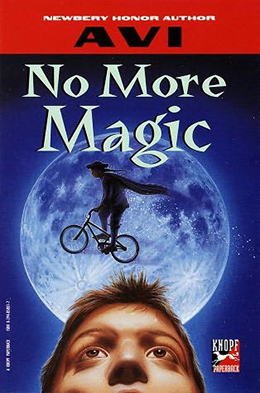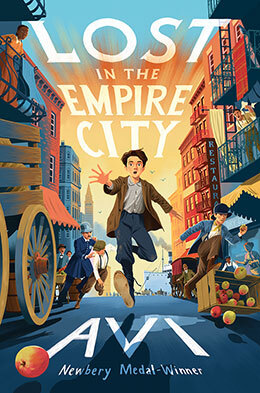Avi's Blog, page 4
February 25, 2025
When Nominated for an Edgar Award

It was in 1975 (fifty years ago!) that I published my first novel, No More Magic. If you go back into my blog entries and pull up the submission for 11-15-2016, you can read how the story came to be, which concerns the loss of a valuable jade green ring at one of my boy’s birthday parties. But there is another part to the story about the story.
To my great surprise, No More Magic was nominated for the “Best Juvenile Mystery of the Year,” by the Mystery Writers of America. These awards are better known as the Edgars, after Edgar Allan Poe. They are, as I know now, highly prestigious.
But back then, new to the world of children’s books, I had never heard of the award or the organization. The truth is I had no idea as to the meaning and honor of the award, much less what the ceremony was all about. To be perfectly clear, I did not take it all seriously.
With the nomination came an invitation to the annual awards banquet to be held in NYC.
I am not sure how it came to happen, but I invited my twin sister, Emily Leider, to come to the banquet with me. My sister is also a writer and in those days had begun her career as a published poet.
In any case, the banquet hall was full and, as I wandered about, I began to recognize some names of the people who were there, quite famous writers in the crime genre, fiction and non-fiction. I began to sense I was in a company well above my literary grade. Indeed, Jorge Luis Borges was the main speaker and award recipient.
After some general milling around, we were seated at a large round table. Introductions were made. I knew no one but recognized the name of the white-haired woman — a name I no longer remember, but whom I recognized as a quite famous mystery book writer. Around her neck, she was wearing a necklace. Its brilliance and glitter suggested the strand was all diamonds, attesting to both her status and achievements.
I was seated next to another writer (another name I can’t recall). As we were chatting, I must have made a remark to the effect that I was a nominee, that it was my first novel. I must also have made a remark about the award, musing if it had any importance.
At that point, the writer quickly pulled out a printed bookmark that listed the many books he had published. He slapped it before me. “All I can tell you,” he informed me, “is that I have published twenty-five books, and I have never been nominated.”
Abashed, I must have mumbled some kind of apology for my inexperience and ignorance.
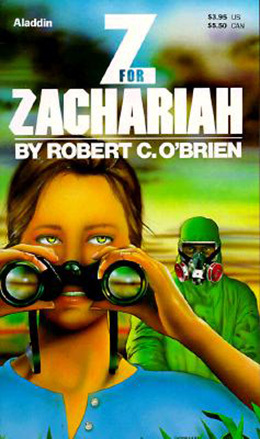 At some point a little further on, that bejeweled woman writer across the way, turned to my sister. “And what do you do, my dear?” she asked.
At some point a little further on, that bejeweled woman writer across the way, turned to my sister. “And what do you do, my dear?” she asked.
“I’m a writer.”
“What kind?”
“A poet.”
“Ah!” said the woman, and she placed her hands together as if in reverence: “We who only write prose must always bow to the poets.”
And she did so.
My sister glowed with pleasure.
I did not win the award. Robert O’ Brien did for his book Z for Zachariah.
But I did win something very useful for a young writer: some humility.
February 18, 2025
Revisions: AI or Not?
“Instantly Rewrite With AI | Rewrite With Ease Quickly rewrite sentences for essays, emails, articles, and more. 97% of Grammarly users report that it is their favorite writing tool.”
If I have learned anything in my career it is that nobody — nobody — writes anything very well in one go. True, when writing a novel now and again I’ll write a passage, a line, which doesn’t require a rewrite — but truly, that is rare. Good writing requires all but universal rewriting. A lot of it. So, when the message above appeared on my computer screen I took notice.
Mind, I use the spell/grammar checker built into my computer. I also use Grammarly. How do I use these programs?? When I am close to submitting the first draft of a novel I put the text through these programs. In so doing I catch misspellings, word omissions, and beyond all else, my placement of commas, which is not my strong point. I never use these programs to rewrite my text. I am willing — wanting — to stand or fall by my own work.

Regarding revisions, one of my favorite Samuel Johnson stories goes like this:
BOSWELL: Sir, my friend has written a fine book with many splendid passages, but no publisher will take his book. What should he do?
JOHNSON: Tell your friend to remove all his splendid passages and he will sell his book.
To be sure, in the process of working on a book, there is a vital import from my editor who can (and usually does) call for major revisions and line changes, even small corrections. And, at some point the text is submitted to the keen eyes of a copy editor bringing forward further changes.
There has also been a long-standing tradition of the “ghostwritten” book, books put forth as written by celebrities or well-known public figures, but in fact written by someone else. Here is one such famous example set forth by Wikipedia:
“Trump: The Art of the Deal is a 1987 book credited to Donald J. Trump and journalist Tony Schwartz. Part memoir and part business advice book, it was the first book credited to Trump, and it helped to make him a household name. It reached number 1 on The New York Times Best Seller list, stayed there for 13 weeks, and altogether held a position on the list for 48 weeks.
Trump cited it as one of his proudest accomplishments and his second-favorite book after the Bible. Schwartz called writing the book his “greatest regret in life, without question,” and both he and the book’s publisher, Howard Kaminsky, alleged that Trump had played no role in the actual writing of the book. Trump has personally given conflicting accounts on the question of authorship.”
As for Grammarly’s offer to provide quick rewriting (“and more”) by way of AI, I am sure that in the not-too-distant future, a book will pop up on some best-selling list, which, after the fact, will be revealed to have been completely written by a computer. It will happen. I’m sure of it.
But I believe that each writer is unique and the writing that results is personal, conveying the writer’s individual vision, emotions, and understanding of life. No machine can match that. I never want it to.
February 11, 2025
Tales of Wonder
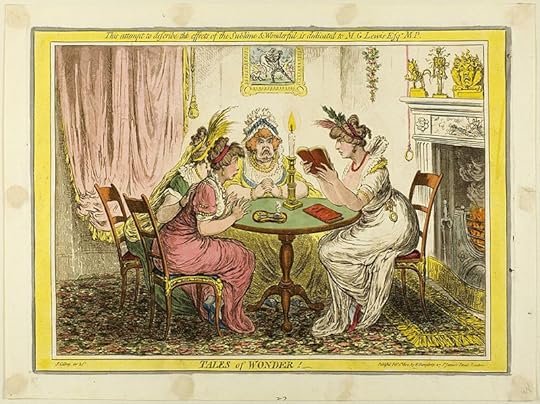
Hanging upon my wall is an etching by the British artist / satirist James Gilroy (1756–1815) titled Tales of Wonder.
To my eyes, it’s a wonderful work of art, brilliantly animated with life. In the style of the time, it contains a wealth of information — almost a narrative.
The first version of this print was published in London, in 1802. As was the practice of the day there were multiple printings of such etchings, with some variations in the imagery. It takes a print specialist to give a specific date for such popular printings based on these variations, so I have no idea what my iteration might be. Surely, however, it was made somewhere about 1802–1803. Since in those days there was no color printing, it was hand-colored.
Gilroy, who has been called the “Father of the political cartoon,” is here showing four well-dressed women of the moment, in a room that depicts considerable wealth.
Three of the women are being read a highly popular (and sensational) 1796 novel titled The Monk by the English writer, Matthew Gregory Lewis, which he wrote before he was twenty. In its day, the book was both highly scandalous and enormously successful, so successful that Lewis came to be called “Monk” Lewis.
A Wikipedia summary of the novel tells us that it is a story about a virtuous monk who gives into his lustful urges, setting off a chain of events that leaves him damned. “It is a prime example of the type of Gothic novel that specializes in horror.” In fact, it has been suggested that it was Lewis who paid Gilroy to create this illustration as an advertisement for the book. The print also became very popular.
[You can read the book online.]
The Monk was widely imitated and copied, setting a fashion for such novels. Indeed, in our own time, the most widely read forms of the novel are the romance and the thriller. A connection? I’m willing to think so.
The image — as was the fashion of the day — gives a variety of clues as to what is happening. The women are transfixed by the story, showing both fascination and horror.
I do wonder about these women. They are all wealthy and could have owned their own copies of the book. Does that mean the reader is the only one who is literate? No clues.
A watch that hangs from the reader’s waist shows the time to be 12:45 PM, telling us that the women are so enthralled by the book that they are staying up past midnight.
To suggest the full gothic elements of the book, there is the figure of a skeleton adorned by snakes sitting on the mantel. There is also a sculpture of a dragon. On the wall, an image of a knight abducting a young woman.
The original book was published in three volumes, but the print shows only two. No suggestion as to why.
I found my print years ago in a thrift store in St. Paul (Minnesota). I was there because I was giving a talk. I had been wandering about, and spied it midst the shop’s clutter, recognized it for what it was, and bought it for what I am sure was far less than its true value.
How did it get there? Who knows?
Why is it on my wall? Beyond all else — for me — the image depicts the joy — and thrill — of reading.
February 4, 2025
The Untold Story of Books
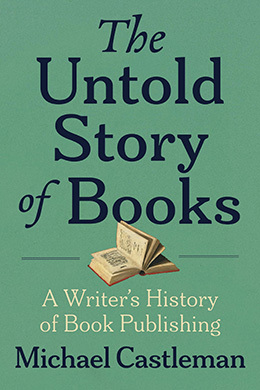 If anyone is interested in the world of writing and publishing, let me highly recommend, indeed urge upon you, The Untold Story of Books, by Michael Castleman. (The Unnamed Press, 2024). The subtitle says it all: A Writer’s History of Book Publishing.
If anyone is interested in the world of writing and publishing, let me highly recommend, indeed urge upon you, The Untold Story of Books, by Michael Castleman. (The Unnamed Press, 2024). The subtitle says it all: A Writer’s History of Book Publishing.
Note well: a writer’s history.
The truth is there is a lot about publishing that is rather a secret to many. That’s because — according to this book — transparency is not a major component of publishing.
Mark Chimsky, former editorial director of Harper San Francisco, former director of trade paperbacks at Little Brown, and former editor-in-chief of the trade paperback division of McMillan, had this to say about the book: “The Untold Story of Books is full of surprises. I worked in publishing for thirty years and was amazed how much I learned about the industry … The publishing industry is often shrouded in mystery. This book lifts the veil and provides a fresh, new, compelling perspective.”
If you have been immersed in the world of writing and publishing as long as I have — some fifty-six years and counting — you have heard the word “love” endless times. As in “I love this writer.” “I love this publisher.” “I love this book.” “I love this editor.” “I love this publicist.” “I love the world of writing and publishing.”
I regular feast of love. Or so it would seem. I don’t for a moment suggest there is no such love in the world of creating books, and the folks that inhabit it, but what one does not hear so clearly, is that there is also a lot of tension between the world of publishing and the world of authors.
Publishing is often projected — by publishers — as wholly committed to bringing forward the art of good writing.
Well …
Castleman cites two oft-told jokes about this writing world.
“How do you make a small fortune in publishing? Start with a large one.”
And:
“What’s the difference between an author and an extra-large pizza? An extra-large pizza can feed a family of four.”
The point is that publishing is a business, a business that needs to make a profit to exist. That is, as it were, on one hand. The writer, on the other hand, seeks to make a living by writing.
I too, in reading this book, learned a great deal about publishing and its evolution. Some of the information is just fun, such as the fact that the first known named author was a woman. Her name was Enheduanna, a Sumerian (2285–2250 BCE) princess-priest. Less fun was to learn that when publishers are audited for accurate royalty figures, they are all too often found at fault.
For myself when reading the book (twice!) I found myself laughing, crying, despairing, cheering.
If you are in this world of writing you need to read this book.
January 28, 2025
Memories

One of the key tools a writer has is memory. In particular, it’s not unusual for those who write for young people to have engaging — and meaningful — memories of their own childhood. Such memories are often put to invaluable use not just in terms of story, but also in the details that provide authenticity to a youth narrative. When recalled, time, place, and objects can provide realistic grit to a fictional life. Such memories can capture not just places, but people, their relationships, and experiences.
More recently, in my recently published Lost in the Empire City, early memories are embedded.
In the book much is made of the nineteenth and early twentieth century coal delivery shoots that were part of so many brownstone houses that still exist in NYC, including the one where I was raised. The memory is so strong that it was relatively easy for me to use it in the book.
Another:
During the post-war 1940’s my parents summered on an island — Shelter Island — in the middle of Peconic Bay, New York. It took a ferry to reach it. These ferries, with their load of fifteen or so cars, would, upon arrival at the island, smash into their piers of tar-blackened wooden pilings. Exciting for a kid. I remembered those moments so well I was able to use the same experience for my protagonist, Santo, when he arrived by ferry in NYC, from Ellis Island in 1911.
And the house he comes to live in is much like my own childhood NYC home, which was built in 1835.
Thus, memories of 1835, and the 1940’s touch my 2024 story set in 1911. Try stringing all those beads together!
But the author’s memory is also at play in a given book, so as to give depth, reality, and constancy to characters and plot lines. If a character walks with a limp on page one, she’ll need to have it on page two-thirty-six. Likewise, the character given to easy laughter early on must have a reason not to have it (or to have it) at the end of the book.
At the same time, readers look for change and growth in a character, but that possibility has to be built in. The point is: characters have memories.
And crucially, so do readers.
January 21, 2025
Simultaneously Objective and Subjective
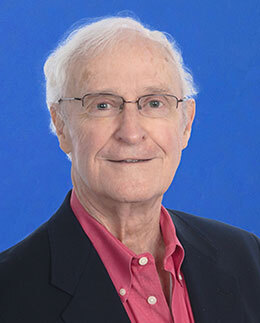 From 1983 until 2011 — twenty-eight years — I worked with the late Richard Jackson as my editor. During that time he was at Bradbury (his company), Macmillan, Orchard, and then Atheneum. If I count correctly, I believe we created some twenty-five books together. They ranged from picture books to novels and included The True Confessions of Charlotte Doyle, Nothing but the Truth, and Poppy, which suggests the range of the books on which we worked. Indeed, he edited many, many different kinds of writers such as Judy Bloom, Paula Fox, and Brian Floca.
From 1983 until 2011 — twenty-eight years — I worked with the late Richard Jackson as my editor. During that time he was at Bradbury (his company), Macmillan, Orchard, and then Atheneum. If I count correctly, I believe we created some twenty-five books together. They ranged from picture books to novels and included The True Confessions of Charlotte Doyle, Nothing but the Truth, and Poppy, which suggests the range of the books on which we worked. Indeed, he edited many, many different kinds of writers such as Judy Bloom, Paula Fox, and Brian Floca.
He had the skill (among many skills) of being able to work with a wide variety of artists and writers, having the ability to relate to them and their work according to their different talents, methods, and (not least) personalities. In fact, during the few times when I was with him when he was with a number of his people, he was uncomfortable, as if not sure how to act with such a varied group. He was at his best one on one.
When we spoke it was mostly by phone (no e‑mails then) and these sessions were extremely creative, working out problems and ideas, the talk punctuated by much laughter. I came to think of him as my good friend. Not to say that he thought of me that way (I won’t presume) but he was always so focused on what we were working on that he made me feel that way. I had great trust in his judgments.
Indeed, one of the things that amazed me about the way he worked was that even though he worked on many projects at the same time, if I called and raised a question about a point in such and such a book, he was instantly and fully connected to our project. It was not bravado. He always could connect — spot on — to the book.
Another aspect of our work together — and let it be understood I assume he worked differently with everyone — is that when we had come to the end of a project, which is to say when we both agreed a book was done, a few weeks would go by, and then I’d receive a call from him. “I’ve been thinking,” he would begin such conversations. Then he would tell me that he had realized that one aspect of the book needed clarification, revising, rewriting, etc. It might be big or small. In other words, though we had both agreed the book had been done, he had kept thinking about it.
That was because he was more than the textual editor of the book. He engaged himself in all aspects of the book’s evolution, from talking about the idea for the book, and the editing of the text, to the physical production, and its marketing. One might think every editor works that way. Alas, no.
More than anything, what I experienced with him was the key component of professional writing: the need to be simultaneously objective and subjective about one’s work. That is, the writer must be critical of his/her work, without neglecting the subjective emotional, and even intuitive engagement with the work. The writer must be simultaneously an emotional writer and an objective reader. It is that bifurcated way of writing which is essential to craft a good piece of writing.
And that — as I knew him — was Richard Jackson’s great talent.
January 14, 2025
Full Stop!
IFIWERETOWRITEMYBLOGPOSTSTHEWAYTHEANCIENTGREEKSANDROMANSDIDYOUWOULDFINDIT
[If I were to write my blog posts the way the ancient Greeks and Romans did you would find it]
Very difficult to read. With no punctuation, only uppercase and no lowercase letters, texts were meant to be read aloud by those few who could decipher such writing.

It’s curious to think that early writing was primarily meant to be read aloud because even today it’s common to use phrases such as “The newspaper said that … ” Or “The book says …” “His letter says …” In fact, we don’t normally express ourselves with such words as “The book reads that …”
In those ancient days, there were not even the period marks [.] or as British writers call them, “full stops,” to break up sentences. It was a 3rd Century BCE librarian (are not librarians always helping people to read?!) named Aristophanes — the chief of the famous Alexandrian Library — who introduced what we have come to know as periods and commas.
That said, it took Irish and Scots Christian clerics — in the 6th Century — with their emphasis on the Book—and frustrations with Latin — that brought punctuation forward. Then King Charlemagne (8th century) who ruled over much of what is today modern Europe, directed the monk Alcuin to create an alphabet so his far-flung, multi-language subjects could read his Latin directives. Aside from punctuation reform, Alcuin introduced lowercase letters.
 Emperor Charlemagne surrounded by his officers receiving Alcuin, who is presenting manuscripts made by his Monks. Painted by Jean-Victor Schnetz in 1830.
Emperor Charlemagne surrounded by his officers receiving Alcuin, who is presenting manuscripts made by his Monks. Painted by Jean-Victor Schnetz in 1830. To proofread my own work I use opposite historical ends of the writing spectrum: I read the text aloud and use my computer’s spell-checker.
There are a number of key books about writing that consider punctuation, which you might consider and use. William Strunk and E.B. White’s (he of Charlotte’s Web) classic The Elements of Style is still of great use.
Another fine and clever book—and more recent—is Dreyer’s English: An Utterly Correct Guide to Clarity and Style. Benjamin Dreyer was copy chief of Random House.
You might not think such a title is delightful to read, but this one absolutely is. He even has a chapter called The Realities of Fiction which I recently reread and that had me rushing back to my current project.
The British writer Lynne Truss wrote a wonderfully funny book titled Eats, Shoots & Leaves, which is about punctuation.
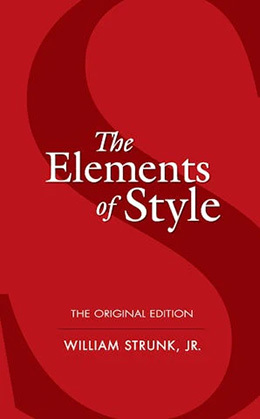
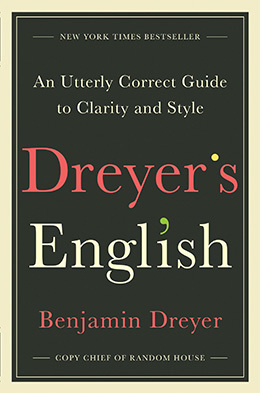
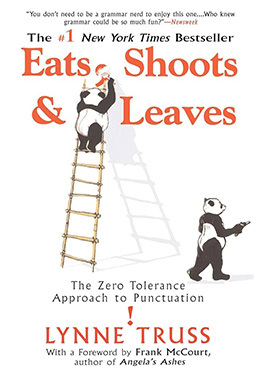
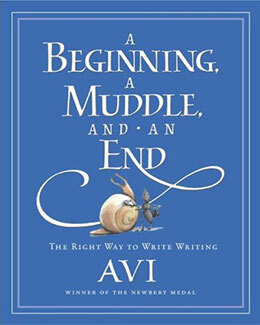
I was so taken by the book that when I wrote A Beginning, A Muddle, and an End, I could not resist writing:
“Avon, don’t forget all I said. You must not! Speak the truth about what happened! Things will be better, I think. To lie about the truth, it never helps.”
Then I added:
“Avon! Don’t! Forget all I said! You must not speak the truth about what happened! Things will be. Better, I think, to lie. About the truth … it never helps.”
My favorite story about punctuation (can one have a favorite story about such a subject?) pertains to Roald Dahl.
Many years ago I was visiting my publisher’s office (Pantheon Books) waiting to see my editor. For a few moments, I had been parked in the copy editor’s office. Being curious, I glanced over at her desk to see what she was working on. Lying there was a typewritten manuscript by Roald Dahl — I am sorry to say I don’t remember the title.
Face up on the title page, in pencil, were scrawled these words:
God damn it! When I write … I mean …
Dahl.
January 7, 2025
They Engaged My Odd Attention
In my writing process, I don’t specifically seek out ideas, so much as I come upon them, serendipitously. But once I come upon the germ of an idea I do my research, mostly exploratory reading. I seek books, and articles, and build, in my librarian-like fashion, a library on the topic. Mind, even when I do this that does not mean I go on to write a novel (or short story) based on the subject. What it does mean is that I learn a lot of things, random things, if you will. That said, these odd facts are very useful when there is a lull in table conversations. It also fools people into thinking I know a lot about things, when in fact I merely know a curious fact.
In 2024 there were three things in particular that engaged my odd attention, Abraham Lincoln, the great Silver Crash of 1893, and rats.
They are not connected.
As you might guess there is a vast library about Lincoln, and it’s easy to find unusual bits of information about him. One description of this very tall and lanky man stuck in my mind. It was said of him (I don’t recall who said it) that “he looked like a grasshopper trying to stand up.”
 Mary Todd Lincoln and Abraham Lincoln (Wikimedia Commons)
Mary Todd Lincoln and Abraham Lincoln (Wikimedia Commons) The other curious fact that remains in my mind is about his wife, Mary Todd Lincoln, who was a famously difficult person. On the very morning that Lincoln was to leave Springfield and go to Washington D.C. to be inaugurated — a major moment in US history — she lay on the hotel floor and refused to get up until Lincoln promised to appoint someone (who had given her a present) to some post in his new government. Lincoln gave in. I don’t know who that person was, or what position he gained. It probably was no more than postmaster in some obscure town.

Rats. I learned that rats can laugh (truly) and that April 4th of each year is “National Rat Day.” I’m not at all sure what one is supposed to do on that day. Maybe you should dress up for “World Rat Day” which is celebrated on the same day. I did learn that rats are very social creatures and share a lot of biology with humans — which is why they are used for so many medical experiments. Also, lots of people keep rats as much-loved pets. Indeed, the writer, Jerry Spinelli (when I knew him) had a pet rat.
As for the great Silver Crash of 1893, it has particular meaning for the State of Colorado (where I live) because much of the economy then was based on mining. But that “crash” led to the first national economic depression, which in those days was called a “panic.”
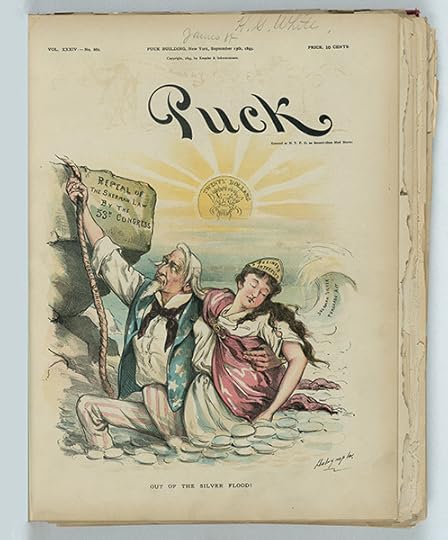 Puck magazine, 13 September 1893, “Out of the Silver Flood!” by Louis Dalrymple. Print shows Uncle Sam trying to climb out of a flood of silver coinage toward elevated ground labeled “Repeal of the Sherman Law by the 53rd Congress” using a rope labeled “Public Opinion” while carrying a female figure labeled “Business Interests”; waves labeled “Sherman Silver Purchase Act” crash in the background, while overhead the sun, as a gold coin labeled “Twenty Dollars,” shines brightly. Retrieved from Library of Congress, 5 January 2024.
Puck magazine, 13 September 1893, “Out of the Silver Flood!” by Louis Dalrymple. Print shows Uncle Sam trying to climb out of a flood of silver coinage toward elevated ground labeled “Repeal of the Sherman Law by the 53rd Congress” using a rope labeled “Public Opinion” while carrying a female figure labeled “Business Interests”; waves labeled “Sherman Silver Purchase Act” crash in the background, while overhead the sun, as a gold coin labeled “Twenty Dollars,” shines brightly. Retrieved from Library of Congress, 5 January 2024. What I learned (and still do not understand) is that there was political entwinement with the desire to keep silver as part of the national financial system and the growing suffragette movement.
As it happened, silver stopped being bought by the US government and women did not get the vote until after World War I.
Did any of these research fancies evolve into a book? I leave it to you to guess and wait.
Check your local bookstore.
December 31, 2024
A Walk on New Year’s Eve
The coming of the new year always brings me a renewed sense of time, of moving forward. But there was a moment — one New Year’s Eve — when I experienced being lost in time.
As a restless teenager, growing up in Brooklyn, New York, I often bolted out of my home, and without informing anyone (which is to say my parents or siblings) what I was doing, set off wandering. No one knew I had gone, which was very much what I wanted. Quite often I did this at night — ten or eleven PM, which enhanced my sense of adventure and mystery. I had no particular goal other than to walk and be alone. On that night — New Year’s Eve — I had no party to go to. I certainly did not wish to celebrate with my parents. Maybe I was feeling sorry for myself. Maybe I just wanted an adventure. I don’t know. But something quite unusual happened.
Living where I did — Brooklyn Heights — it was easy to reach the Brooklyn Bridge, and then head over and across the East River. Walking across the great bridge was always a magical experience. Though I did it often at night, I would see no other person but was acutely aware that there were millions of people around me, all invisible. The random window city lights brought heavens lower, almost in reach. I relished the sense of isolation I felt, taking pleasure in being solitary, of being acutely aware of my senses. Curiously — as I look back at these jaunts — what I did not feel was any sense of danger or fear, the product of youthful folly.

I would not recommend doing it today.
Once off the bridge, I had to decide which way I would turn, north or south. If I went north, the goal was usually Times Square, where I could mingle in the crowds and then take the subway home. On this particular night, I turned that way.
At some point, I heard the horns, whistles, and firecrackers that told me the New Year had arrived. I wasn’t particularly interested; I just kept walking. For whatever the reason — I might have been tired — or didn’t want to deal with the Times Square New Year crowds — when I reached Fourteenth Street, I decided I had enough and went down into the subway. By then it was one or two AM. I would go home.

The Fourteen Street Station was (and is) exceptionally large, with local and express tracks, along with passenger platforms of a very wide and expansive depth and length. Its connections and extensions are such that if you don’t know your way around, it’s easy to get lost. But since I passed through it almost daily on my way to high school, I knew it as well as I knew any place in the city.
That time, when I got down to the platform, to my surprise, I was the only one there. It was as if I had entered a vast and empty cave system, a labyrinth of concrete walkways and iron beams holding up the low ceiling, everything only partly lit by dim white lights plus the blinking red and green that constituted the complex signal system for high-speed trains. On every other beam the number “14” was posted. A wooden bench was there, upon which no one was sitting. It was all completely familiar. But empty.
As I stood there, the only sounds I heard were the occasional drip-drip of water coming from I knew not where, and sometimes the soft scurrying steps of a scrambling rat in search of sustenance. In other words, I was aware of the emptiness of the place, not so much deserted as abandoned. I was, at that moment, acutely aware that I was the only person there. I stood, having nothing to do but wait for a subway train to arrive.
Then, quite suddenly, the world in which I was standing changed. Reality shifted. I did not see functioning, weight-bearing beams, but only iron. I did not see platforms; I saw just concrete. I did not see light fixtures, only light. No rails but ribbons of steel. That bench was merely wood. The number 14 was in the air, everywhere, unattached. It was not a station. I was simply somewhere, nowhere, with nothing under my feet, the space around me no longer enclosed but altogether infinite. That is to say, I was seeing no function, no world as I knew it by name or what it was meant to be or do, but merely material substance, to which I was utterly disconnected. I was drifting, untethered, floating free in a universe I had never experienced or known anything about. All sense of time vanished, as did any awareness as to how much time was passing.
All this was instantly dissolved by a sudden roar as a train rushed into the station. Snapped back to the world I knew, I got into the car. A few people were there: an old woman with five stuffed shopping bags around her swollen feet: A man wearing a bent party hat, asleep: A young couple holding hands, her head resting on his shoulder: A white bearded man reading a Bible. Ordinary New York.
As the train rushed on, I tried to make sense of what had happened. Being (or so I believed) a rational fellow, I told myself I had fallen partly asleep and had been seeing things with only part of my brain. Nothing more.
And yet, and yet……….
This happened some seventy years ago. I remember it with great clarity. I now think of it as the New Year’s Eve in which I slipped away, however briefly — through time and space, going I know not where.
I never got there, and it has never happened again.
December 24, 2024
The Night Before Christmas
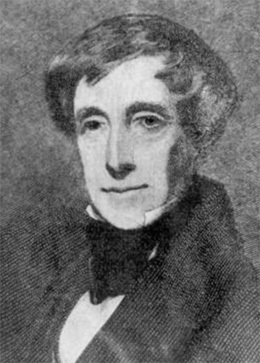 Clement Clarke Moore was born in 1779. He was an academic, teaching Asian and Greek literature as well as divinity and biblical studies at New York City’s General Theological seminary which was part of the Protestant Episcopal Church. With his inherited wealth, he was also a land developer, in particular in the city area known as Chelsea. He would become a trustee of Columbia College (which became the University). Early on he wrote an important anti-slavery pamphlet. He was also a poet.
Clement Clarke Moore was born in 1779. He was an academic, teaching Asian and Greek literature as well as divinity and biblical studies at New York City’s General Theological seminary which was part of the Protestant Episcopal Church. With his inherited wealth, he was also a land developer, in particular in the city area known as Chelsea. He would become a trustee of Columbia College (which became the University). Early on he wrote an important anti-slavery pamphlet. He was also a poet.
His poem, first titled A Visit from St. Nicolas, was written for his children and published anonymously in 1823, appearing in a newspaper, the Troy (NY) Sentinel. It very quickly gained wide popularity. Indeed, it has been suggested that it is the best-known poem by an American.
It was not until 1837 that he was identified as the author. Only gradually did it come to be known as The Night Before Christmas, which is how most people know it.
I have absolutely no idea when I first heard it, but I can’t recall a time when I ever forgot it. For me — as for countless others — it represents the essential saga of Santa Claus and Christmas Eve. It was Moore, by the way, who invented the names of those reindeer.
For those who don’t have it at hand, or perhaps don’t know it, here it is.

‘Twas the night before Christmas, when all through the house
Not a creature was stirring, not even a mouse;
The stockings were hung by the chimney with care,
In hopes that St. Nicholas soon would be there;
The children were nestled all snug in their beds,
While visions of sugarplums danced in their heads;
And mamma in her ‘kerchief, and I in my cap,
Had just settled down for a long winter’s nap,
When out on the lawn there arose such a clatter,
I sprang from the bed to see what was the matter.
Away to the window I flew like a flash,
Tore open the shutters and threw up the sash.
The moon on the breast of the new-fallen snow
Gave the luster of mid-day to objects below,
When, what to my wondering eyes should appear,
But a miniature sleigh, and eight tiny reindeer,
With a little old driver, so lively and quick,
I knew in a moment it must be St. Nick.
More rapid than eagles his coursers they came,
And he whistled, and shouted, and called them by name;
“Now, DASHER! now, DANCER! now, PRANCER and VIXEN!
On, COMET! on CUPID! on, DONNER and BLITZEN!
To the top of the porch! to the top of the wall!
Now dash away! dash away! dash away all!”
As dry leaves that before the wild hurricane fly,
When they meet with an obstacle, mount to the sky,
So up to the house-top the coursers they flew,
With the sleigh full of toys, and St. Nicholas too.
And then, in a twinkling, I heard on the roof
The prancing and pawing of each little hoof.
As I drew in my head, and was turning around,
Down the chimney St. Nicholas came with a bound.
He was dressed all in fur, from his head to his foot,
And his clothes were all tarnished with ashes and soot;
A bundle of toys he had flung on his back,
And he looked like a peddler just opening his pack.
His eyes — how they twinkled! his dimples how merry!
His cheeks were like roses, his nose like a cherry!
His droll little mouth was drawn up like a bow,
And the beard of his chin was as white as the snow;
The stump of a pipe he held tight in his teeth,
And the smoke it encircled his head like a wreath;
He had a broad face and a little round belly,
That shook, when he laughed like a bowlful of jelly.
He was chubby and plump, a right jolly old elf,
And I laughed when I saw him, in spite of myself;
A wink of his eye and a twist of his head,
Soon gave me to know I had nothing to dread;
He spoke not a word, but went straight to his work,
And filled all the stockings; then turned with a jerk,
And laying his finger aside of his nose,
And giving a nod, up the chimney he rose;
He sprang to his sleigh, to his team gave a whistle,
And away they all flew like the down of a thistle.
But I heard him exclaim, ere he drove out of sight,
HAPPY CHRISTMAS TO ALL, AND TO ALL A GOOD NIGHT!
Avi's Blog
- Avi's profile
- 1703 followers


